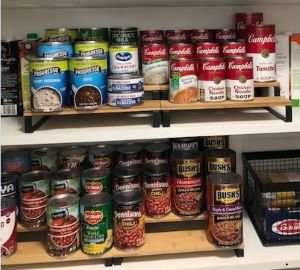You may have heard this term before but in case you haven’t, I have outlined what exactly a clutter coach does and 4 simple questions to know if a clutter coach could help you!
A clutter coach is basically a personal trainer for a someone who is struggling to control clutter in their home. Just like a trainer, we discuss your goals, evaluate your challenges, explore new daily habits to adopt and hold you accountable to ensure you are successful.
HOW TO know if a clutter coach could help you:
Are you struggling with clutter in your home and overwhelmed by getting started or don’t know where to start at all?
Are you finally ready to make a difference in your home but need some motivation and accountability to actually get it done?
Are you prepared to make changes in your daily habits that will improve your relationship with disorganization and clutter?
If you answered YES to any of those 3 questions, a clutter coach could be a great fit for you.
Still not sure how the process actually works? I’ve broken it down into 3 simple steps below!
You can start the process by taking a POP Quiz. This quick questionnaire helps me begin to build your Personalized Organization Program (P.O.P.) by identify what different factors might be affecting your clutter.
After you take the POP quiz, we set up a strategy call to discuss exactly how we would tackle your specific goals and what levels of support you want to engage in. I offer 3 levels of support which vary by frequency of sessions & additional resources provided. Ranging from weekly to monthly coaching sessions.
Once you decide which level of support is right for you. We schedule your coaching calls and review your Personalized Organization Program. Basically this is a step by step guide of how we are going to accomplish your goals. This is unique to each individual and may be altered over time to adapt to changing circumstances.
Think of the “P.O.P.” like the work out program and meal plan your trainer
puts you on to reach your fitness goals.
Your P.O.P. duration will be determined by us in the initial call. This will depend on how many spaces we need to address, how much time you are able to commit to the project and how much clutter we need to address.
That is the general overview but of course you may have additional questions. If so, I encourage you to take the quiz and set up the strategy call. Both are completely FREE and a great way to figure out if hiring a clutter coach is right for you!
let’s tackle your clutter together














